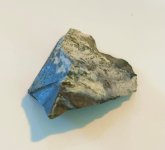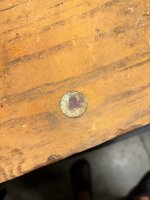E
elsalvador
Guest
Sinking of the Portuguese treasure ship "Nossa Senhora de Reliquias" in 1587
Extracted from "Chronicels of Shipwrecks and Sunken Treasure 900-1900 AD available from SevenSeasPublishing.com
1587
(1) In 1586 a squadron composed of five ships under command of Dom Jeronymo Coutinho, embarking in the flagship Sao Thome departed Portugal for ports in India. Other commanders and their ships were Antonio Gomes in the Caranja, Miguel de Abreu in the Salvador, Francisco Cavalleiro in the "Nossa Senhora da Reliquias," and Joao Trigueiros in the San Filippe.
?
The squadron sailed from Lisbon on April 13th and anchored in Goa on October 6th, except for the San Filippe which lagged behind and arrived in Mozambique very late in the safe weather season. There officials ordered its cargo removed and replaced with cargo previously warehoused from the homebound galleon San Lourenco, which afterwards sailed for Portugal and was captured by English warships in the Azores in December.
Meanwhile in India, either at Goa or Cochim, the "Nossa Senhora da Reliquias" readied for its homeward passage. Prior to departing in January 1587, inspectors found the galleon was grossly and irregularly overloaded, chiefly because certain merchants had secretly arranged for replacing tons of ballast rock with cinnamon, which at the time, was selling at a premium in Portugal. Nevertheless, having received the customary bribes, all was found in perfect working order. The Dutch mariner-historian Linschoten, commenting on the overloading wrote: (sic)
?Sometimes the ships are so laded (overloaded) that the cables (anchor lines) touch the water, and besides that the hatches are covered with divers (various) chests stacked seven or eight high, one above the other. They having no other place to set them in, for under the hatches they are so stuffed, there is not any empty room. So it was with this mighty ship.?
Upon setting out in the voyage hundreds of little boats called ?tones? and ?pallenges? went along side the "Reliquias" selling food and other last minute things to the passengers. Soon after, while exiting the harbor, cages containing hens tumbled from stacks of lumber and burst open on deck and when passengers ran en masse to one side seeking to claim a chicken, the combined shifting of weight and lack of ballast, caused the ship to slowly capsize. In the end, less than one foot of the main mast stood above the water. Linschoten wrote of the wealth lost saying: (sic)
?God knowth what riches were lost in her! For nothing was saved, but some few chests that stoode above the hatches, which divers got up, and yet the goods in them were, in a manner spoiled and the rest utterly lost.??
Extracted from "Chronicels of Shipwrecks and Sunken Treasure 900-1900 AD available from SevenSeasPublishing.com
1587
(1) In 1586 a squadron composed of five ships under command of Dom Jeronymo Coutinho, embarking in the flagship Sao Thome departed Portugal for ports in India. Other commanders and their ships were Antonio Gomes in the Caranja, Miguel de Abreu in the Salvador, Francisco Cavalleiro in the "Nossa Senhora da Reliquias," and Joao Trigueiros in the San Filippe.
?
The squadron sailed from Lisbon on April 13th and anchored in Goa on October 6th, except for the San Filippe which lagged behind and arrived in Mozambique very late in the safe weather season. There officials ordered its cargo removed and replaced with cargo previously warehoused from the homebound galleon San Lourenco, which afterwards sailed for Portugal and was captured by English warships in the Azores in December.
Meanwhile in India, either at Goa or Cochim, the "Nossa Senhora da Reliquias" readied for its homeward passage. Prior to departing in January 1587, inspectors found the galleon was grossly and irregularly overloaded, chiefly because certain merchants had secretly arranged for replacing tons of ballast rock with cinnamon, which at the time, was selling at a premium in Portugal. Nevertheless, having received the customary bribes, all was found in perfect working order. The Dutch mariner-historian Linschoten, commenting on the overloading wrote: (sic)
?Sometimes the ships are so laded (overloaded) that the cables (anchor lines) touch the water, and besides that the hatches are covered with divers (various) chests stacked seven or eight high, one above the other. They having no other place to set them in, for under the hatches they are so stuffed, there is not any empty room. So it was with this mighty ship.?
Upon setting out in the voyage hundreds of little boats called ?tones? and ?pallenges? went along side the "Reliquias" selling food and other last minute things to the passengers. Soon after, while exiting the harbor, cages containing hens tumbled from stacks of lumber and burst open on deck and when passengers ran en masse to one side seeking to claim a chicken, the combined shifting of weight and lack of ballast, caused the ship to slowly capsize. In the end, less than one foot of the main mast stood above the water. Linschoten wrote of the wealth lost saying: (sic)
?God knowth what riches were lost in her! For nothing was saved, but some few chests that stoode above the hatches, which divers got up, and yet the goods in them were, in a manner spoiled and the rest utterly lost.??





